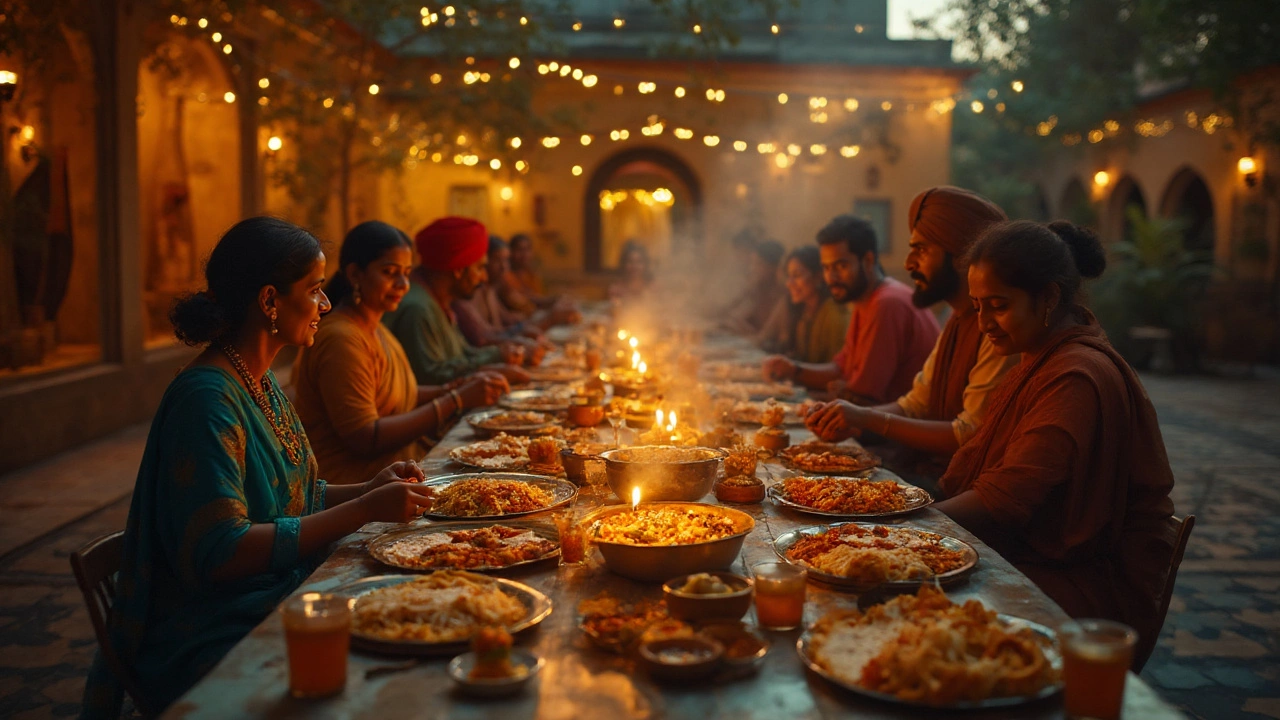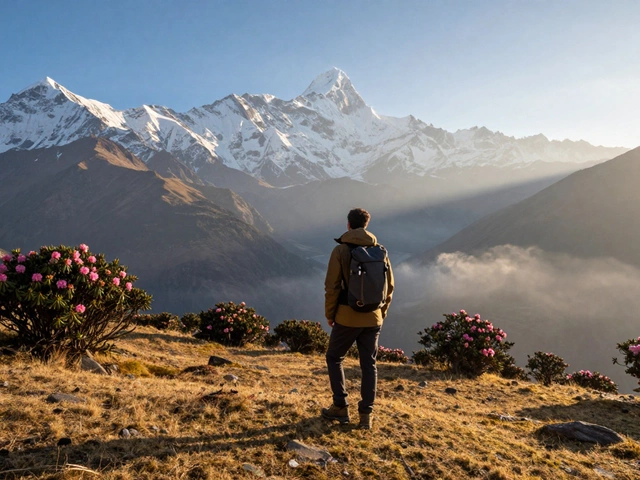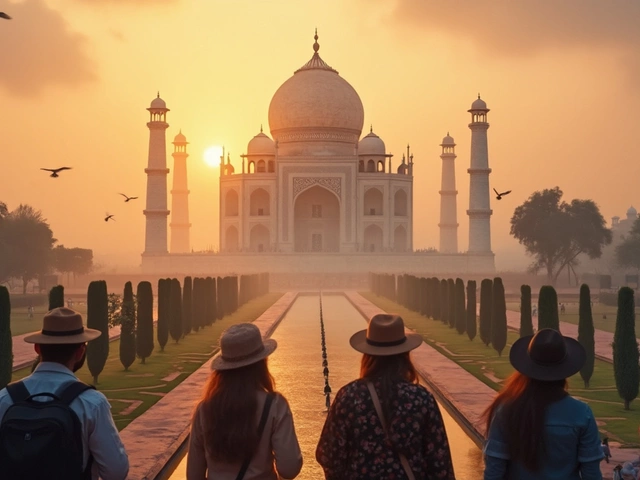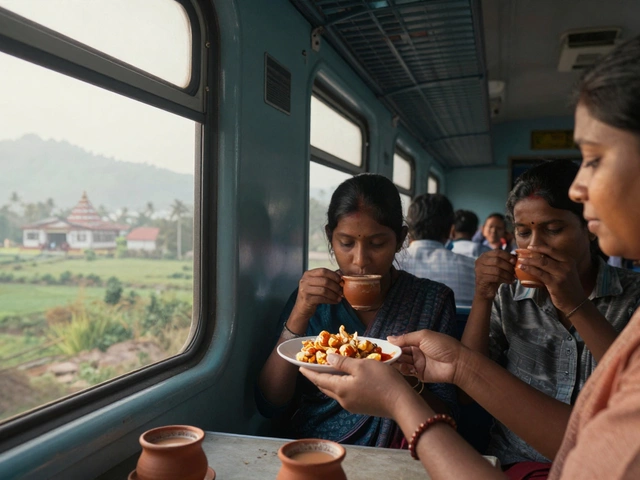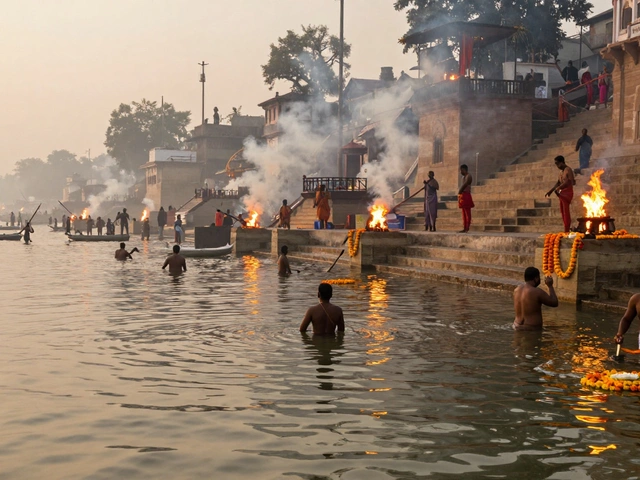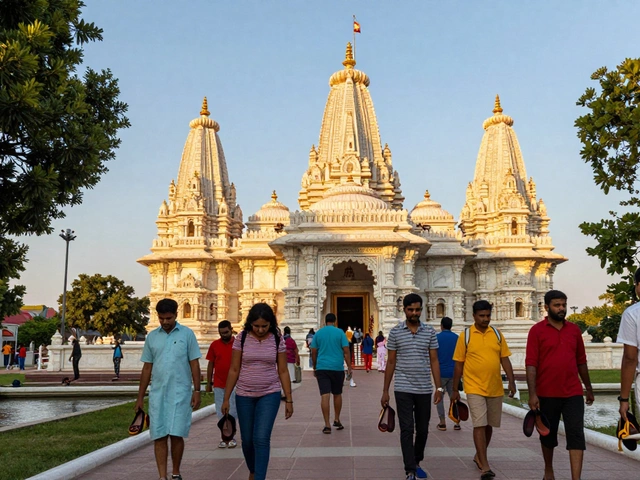You want a straight answer: Does India have a national dish? Yes or no. Here it is without the fluff: India has no officially declared national dish. That’s the official government position as of 2025. The fun part? The food culture is so big and varied that one dish can’t possibly stand in for everyone’s plate. I’ll give you the proof, the backstory, and what to eat instead-whether you’re planning a trip, curious about culture, or just hungry.
TL;DR: No Official National Dish-Here’s What To Eat Instead
• There is no official India national dish. Government agencies have repeatedly clarified this. In 2017, during World Food India, the Press Information Bureau and the Ministry of Food Processing Industries said khichdi was not being named the national dish; as of 2025 there’s still no Gazette notification declaring any dish as “national.”
• Why no single dish? India is a union of 28 states and 8 union territories with different languages, climates, crops, and rituals. One plate can’t capture that range.
• What to eat instead: sample across regions. Think biryani (celebration), dal-chawal (daily comfort), masala dosa (south Indian staple), khichdi (healing comfort), and the thali (a mini-tour on one platter).
• Quick decision rule: want comfort? khichdi or dal-chawal. Want a feast? biryani. Want crispy, light, and vegetarian-friendly? masala dosa. Want a sampler? thali. Street food day? chaat or vada pav.
• Reality check on “facts” you see online: there’s no official national sweet or national drink either. Tea is beloved, sure, but not declared “national.” Khichdi day? Fun events happen, but they don’t make it law.
30‑second plan if you’re visiting India:
- Pick two regions you’ll explore (e.g., Delhi + Lucknow, or Chennai + Madurai).
- Choose 1 “comfort,” 1 “celebration,” and 1 “street” dish from each region.
- Ask for “less spicy” if needed; restaurants will adjust.
- Pair rich dishes with yogurt, raita, or buttermilk to balance heat.
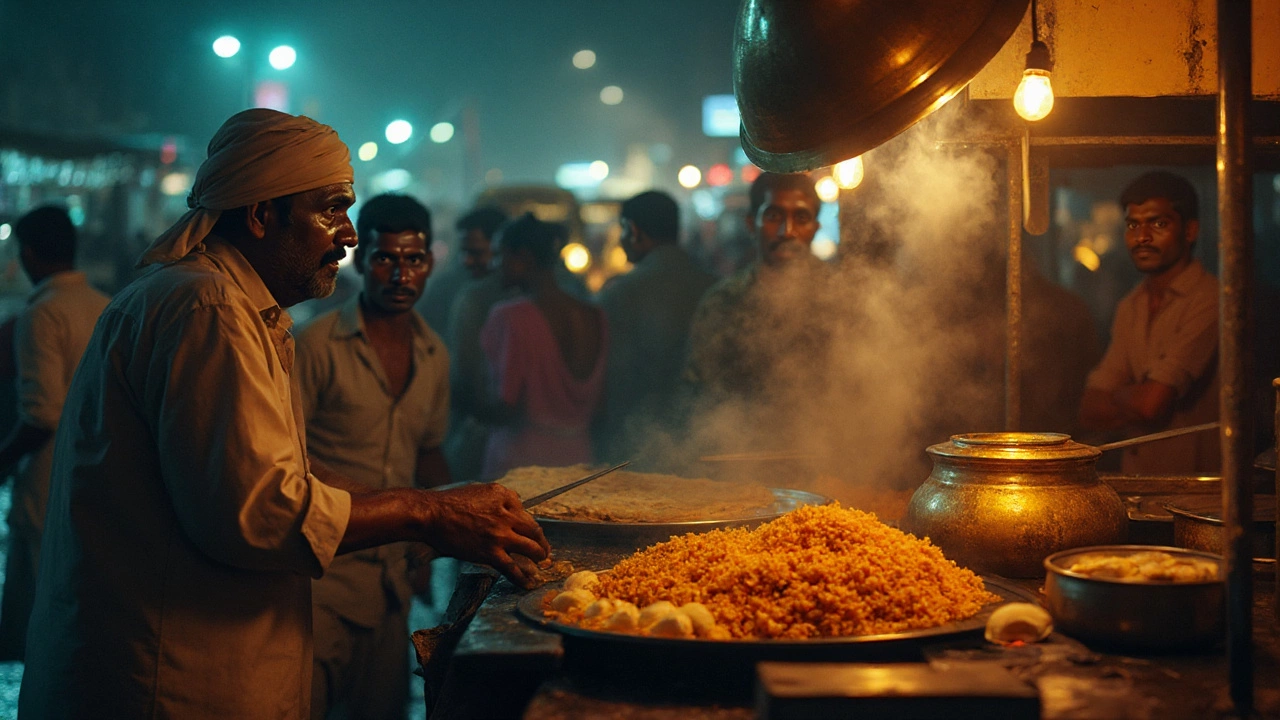
Why India Has No Single “National Dish” (And Who Says So)
First, the paperwork. In India, “national symbols” are formal-think the tiger (animal), peacock (bird), and mango (fruit). These get declared by the Government of India and published in official notifications. No such notification exists for any dish. When rumors surged in 2017 that khichdi was being crowned, the Press Information Bureau clarified: khichdi was being celebrated as a symbol of unity for an event, not declared as the national dish. The Ministry of Food Processing Industries echoed that line, and the food regulator (FSSAI) amplified the clarification. Nothing changed in 2018… or 2022… or now in 2025.
Second, the map. India’s food shifts every 200 kilometers. Wheat up north, rice down south and east, millets in dry belts, coconut on the coasts. Spice blends swing from mustard oil and panch phoron in Bengal to curry leaves and coconut in Kerala, from ghee-forward Punjabi tadkas to sesame and tamarind notes in the Deccan. A single “national” recipe would flatten a living, layered food system.
Third, the people. Not everyone eats the same way. National Family Health Survey data (NFHS‑5, 2019-21) shows most Indians are not vegetarian; vegetarian share varies widely by state and by gender. That alone makes one “representative” dish tricky. Add religious rules, fasting days, and regional harvest festivals, and you can see why the plate keeps shifting.
So if there’s no official winner, what do Indians (and travelers) treat as all-stars? A handful of dishes come up again and again-either because they are daily staples or because they headline celebrations. Here’s a quick comparison to help you aim your appetite.
| Dish | Region(s) most linked | Core ingredients | Typical vibe | Why it’s a contender | Where it shines (example cities) |
|---|---|---|---|---|---|
| Biryani | Pan‑India; strong in Hyderabad, Lucknow, Kolkata, Malabar | Long‑grain rice, meat or veg, whole spices, saffron | Feast / celebration | Shared across communities; endless regional styles | Hyderabad, Lucknow, Kolkata, Kozhikode |
| Dal‑Chawal (Dal‑Rice) | Nationwide | Lentils, rice, tempered spices, ghee/oil | Daily comfort | It’s home on a plate; affordable, nourishing | Everywhere; ask for local dal (toor, moong, masoor) |
| Khichdi | North, West, East (variants in Bengal, Gujarat, Bihar) | Rice, moong dal, mild spices | Comfort / healing | Simple, soothing, pan‑regional; loaded with meaning | Home kitchens; simple eateries; temple kitchens |
| Masala Dosa | South India (Karnataka/Tamil Nadu roots) | Fermented rice‑urad batter, spiced potato filling | Anytime meal | Iconic, vegetarian‑friendly, gluten‑light | Bengaluru, Chennai, Mysuru, Udupi towns |
| Thali | Pan‑India with local sets (Gujarati, Rajasthani, Marathi, etc.) | Platter of small portions, breads/rice, sides, dessert | Tasting tour | Best snapshot of a region in one sitting | Ahmedabad (Gujarati), Jaipur (Rajasthani), Pune (Maharashtrian) |
Notice the pattern: no single prep covers India; a platter might come closest. That’s why chefs, historians, and grandmothers keep dodging the “national dish” question. The better question is, “Which plate for which moment?”
If you’ve seen headlines call khichdi “the national food,” keep this in mind: celebrations, records, or festivals don’t equal law. Unless it’s declared through the Government of India and published in the Gazette, it’s not official. That’s the simplest way to cut through the noise.
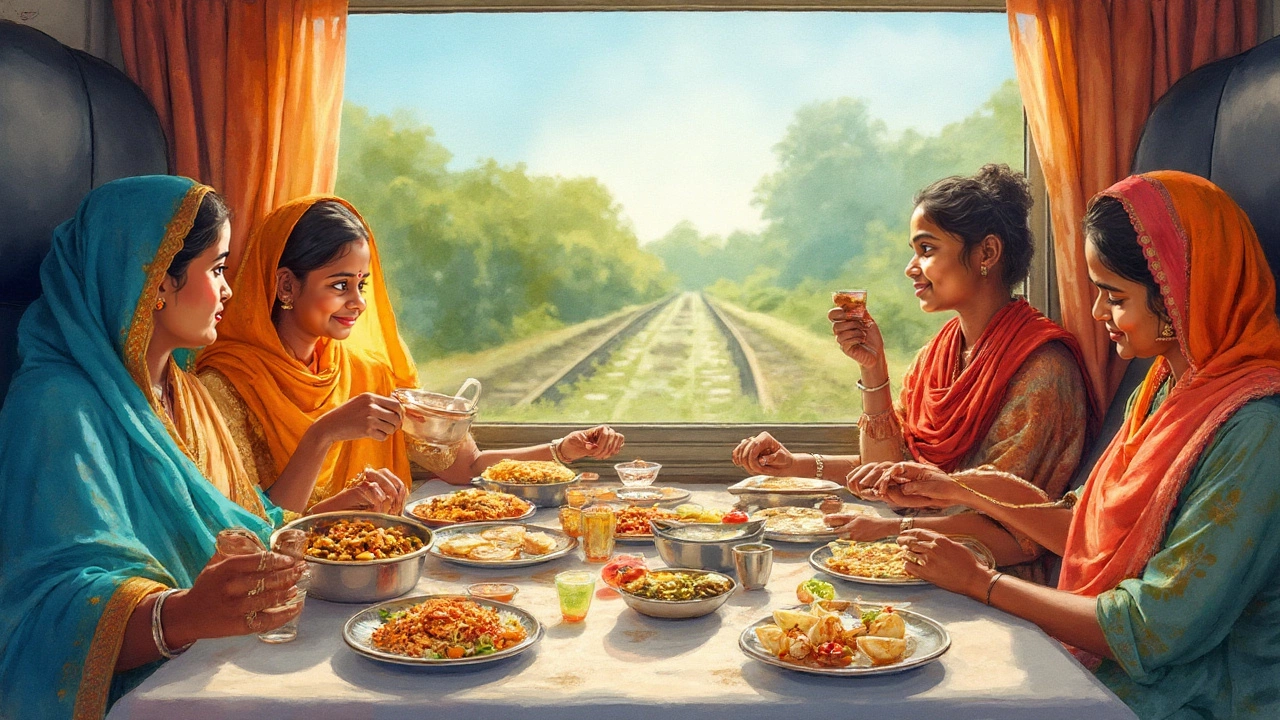
Taste the Debate: Contenders, Where to Try, Quick Recipes, FAQs, Next Steps
Let’s turn the debate into a meal plan. Below are the big contenders, what makes each special, where they shine, and how to try a fast home version when you can’t hop on a plane.
Biryani: A layered rice dish scented with whole spices and often kissed with saffron. Lucknowi (Awadhi) biryani leans on delicate aroma and yakhni (stock). Hyderabadi styles split two ways: kacchi (raw marinated meat layered under half‑cooked rice) and pakki (meat cooked first). Kolkata biryani famously includes potatoes-a legacy of historical frugality that became a feature, not a bug. Malabar biryani (Kerala) leans on short‑grain rice and coastal flavors.
- Where to try: Hyderabad for kacchi, Lucknow for Awadhi elegance, Kolkata for that potato note, Kozhikode for Malabar warmth.
- Weeknight hack: Marinate chicken with yogurt, ginger‑garlic, chili, garam masala. Parboil basmati till 70%. Layer in a pot: ghee, onions, marinated chicken, rice, a splash of saffron milk, seal lid. Low heat 25-30 min. Rest 10 min. Serve with raita.
- Tip: Don’t stir after layering; let steam do the work.
Dal‑Chawal: The daily duo. “Dal” varies-yellow toor in the west, moong in the north, masoor in the east, and dozens more. The magic is the “tadka,” that hot oil or ghee with spices poured at the end: cumin and garlic in the north, mustard seed and curry leaf in the south, asafoetida for aroma in Jain and Brahmin homes, or a tomato‑onion base when you want richer body.
- Where to try: Small, homely eateries often nail it. In thali restaurants, ask which dal is on the menu and how the tadka’s done.
- Home baseline: Pressure cook 1 cup dal with 3 cups water, turmeric, salt. In ghee, bloom cumin, garlic, a pinch of chili, and asafoetida. Pour over cooked dal; finish with lemon and cilantro.
- Tip: Swirl in a spoon of yogurt if heat sneaks up on you.
Khichdi: The gentle one. Rice and moong dal, soft, mild, endlessly adaptable. In Gujarat, it pairs with kadhi (a yogurt‑based curry). In Bengal, “bhoger khichuri” carries a temple scent with ghee and whole spices. In Bihar, you might meet a more robust, garlic‑forward version with mixed vegetables. It’s the dish people turn to for recovery, fasting, or simple comfort.
- Where to try: Temple kitchens during festivals, family‑run diners, and trains-yes, Indian Railways khichdi has fans.
- Stovetop method: Rinse 1/2 cup moong dal + 1/2 cup rice till clear. In ghee/oil, sizzle cumin, sliced ginger, and a green chili. Add dal+rice, 3-3.5 cups water, turmeric, salt. Simmer till soft. Finish with ghee.
- Tip: For a heartier bowl, add diced pumpkin or peas; for a leaner bowl, use more water for a porridge‑like texture.
Masala Dosa: A fermented crepe made from rice and urad dal, stuffed with spiced potatoes. Udupi temples helped shape the vegetarian legacy here. Restaurants serve it with sambar (a tangy lentil‑vegetable stew) and coconut chutney. A crisp, lacey dosa is all about batter fermentation and a hot, well‑seasoned pan.
- Where to try: Bengaluru’s classic dosa joints; Udupi‑style eateries across India; in Chennai, look for ghee roast dosas that glisten.
- Home shortcut: Buy fresh dosa batter if you can. Heat a cast‑iron pan, wipe with oil, spread batter thin, cook till golden, add potato masala (boiled potatoes, turmeric, mustard seeds, curry leaves, onions), fold.
- Tip: Batter likes warmth. If your kitchen is cool, let it rise in the oven with just the light on.
Thali: Not a single recipe, but a format-small portions arranged on a platter so you taste sweet, sour, bitter, salty, spicy, and astringent notes in balance. Gujarati thali is a symphony of seasonal vegetables, farsan (savory snacks), and rotlis. Rajasthani thali might bring dal baati churma. Maharashtrian thali can swing from coastal fish curries to rustic millet bhakris inland. In the south, “meals” arrive on banana leaves-rice in the center, gravies around, with a neat logic to what goes where.
- Where to try: Ahmedabad for a classic Gujarati thali, Jaipur or Jodhpur for Rajasthani, Pune for Maharashtrian, Madurai for banana‑leaf “meals.”
- Smart order: If unsure, ask for the “limited thali” first. If you love it, graduate to the “unlimited” version.
- Tip: Eat with your right hand if you want to blend in; it’s fine to ask for a spoon.
Decision helper-pick by mood:
- Comfort after a long flight: khichdi or dal‑chawal.
- Big night out with friends: biryani plus kebabs, then kulfi.
- Quick vegetarian lunch: masala dosa or idli‑sambar.
- Curious but short on time: a regional thali.
- Street food sprint: chaat in Delhi, vada pav in Mumbai, kathi rolls in Kolkata.
Checklist to avoid myths and awkward moments:
- National claims: If it’s not in a Government of India notification or the Gazette, it’s not “official.”
- Spice level: Say “less spicy” up front. Most places will adjust without judgment.
- Diet needs: “Jain” means no onion/garlic/roots; “satvik” is mild, pure, temple‑style. Vegan? Ask to skip ghee and yogurt.
- Hygiene: Pick busy places with high turnover. Fresh oil and hot griddles are your friends.
- Balance: Pair rich dishes with raita/buttermilk; carry antacids only if you know you’ll overdo it.
Mini‑FAQ
- Is khichdi India’s national dish? No. The Press Information Bureau and the Ministry of Food Processing clarified in 2017 that khichdi was celebrated at an event, not declared national. No official change since.
- Does India have a national sweet or national drink? No official declarations. Popular sweets vary by region. For context, West Bengal holds a GI tag for “Banglar Rasogolla,” and Odisha has a GI for “Odisha Rasagola”-both legit in their own styles.
- Is chicken tikka masala Indian? It’s a UK‑born dish with roots in the subcontinent. In India, butter chicken (murgh makhani) from Delhi is the closer cousin. Neither is “national.”
- What’s the best single dish to understand India? There isn’t one. A regional thali gives you the widest snapshot in one sitting.
- How vegetarian is India, really? It depends on the state. NFHS‑5 shows large regional variation and a minority fully vegetarian. You’ll still find excellent vegetarian food everywhere.
For home cooks-fast pantry setup:
- Core spices: cumin, coriander, turmeric, chili powder, mustard seed, garam masala, asafoetida (a pinch goes far), whole cloves/cardamom.
- Legumes and grains: toor/masoor/moong dal, basmati rice, a millet (jowar/bajra), semolina for quick upma.
- Fats: ghee and a neutral oil; coconut oil for south Indian flavors.
- Boosters: ginger‑garlic paste, curry leaves, tamarind, coconut.
Travel tips by region (quick bites):
- North (Delhi, Amritsar, Lucknow): Rich gravies, kebabs, stuffed breads. Try chole bhature for breakfast and a delicate Awadhi biryani at night.
- West (Mumbai, Ahmedabad): Street legends-vada pav, pav bhaji, pani puri. Gujarati thalis shine for balance and variety.
- South (Chennai, Bengaluru, Hyderabad): Dosa for breakfast, biryani for dinner, filter coffee to bookend the day.
- East (Kolkata, Guwahati): Subtle mustard‑oil fish curries, kathi rolls, mishti (sweets) that are softly sweet rather than cloying.
Common pitfalls and fixes:
- Can’t handle the heat? Ask for “medium” or “less spicy.” Order yogurt, raita, or plain rice on the side.
- Soggy dosa? The pan wasn’t hot. At home, preheat the tawa longer, and thin the batter slightly.
- Biryani too dry? Steam it. Sprinkle a few tablespoons of water, seal the lid, reheat low for 8-10 minutes.
- Dal tastes flat? Your tadka was timid. Heat the fat more and bloom spices briefly till fragrant before pouring.
Credible sources you can trust (no links, just names so you can look them up): Press Information Bureau (Govt. of India) clarifications from Nov 2017 on khichdi; Ministry of Food Processing Industries statements from the same event; FSSAI communications; NFHS‑5 (2019-21) for dietary patterns; The Gazette of India (for any official symbol declarations-none for a dish).
Next steps-choose your path:
- Traveler with one week: Pick two cities in different regions (e.g., Hyderabad + Bengaluru or Delhi + Jaipur). Plan 1 thali meal per city, 1 street food session, and 1 “hero dish” (biryani/dosa) each.
- Vegetarian or vegan: Target Udupi restaurants and thali houses. Say “no ghee” if vegan. Ask for sambar instead of yogurt‑based sides.
- Gluten‑free: Dosa, idli, appam, rice, millet rotis-plenty of safe bets. Confirm cross‑contact if you’re celiac.
- Budget eater: Street stalls with large crowds at peak hours are safest. Order what you see flying off the griddle.
- Home cook on a Sunday: Make a dal you love, a quick vegetable stir‑fry, rice, and a raita. It’s your tiny thali-balanced, fast, and comforting.
If you remember just one thing, remember this: there’s no single “national dish,” and that’s the best news. It means you get to eat your way across a giant map, not tick a box. Start with one plate that suits your day, then keep going. The map only gets tastier from here.
